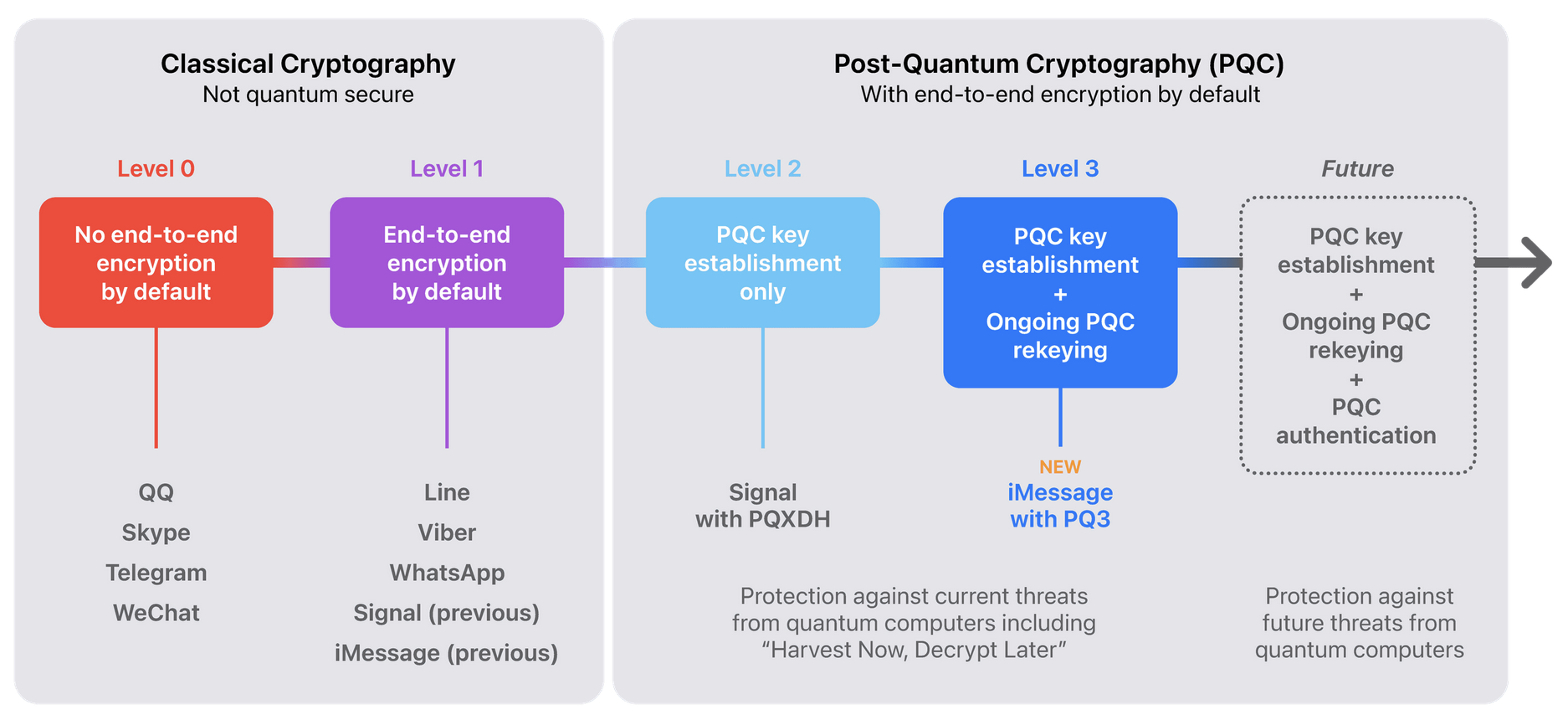
Douglas Stebila
Security analysis of the iMessage PQ3 protocol
Abstract
The iMessage PQ3 protocol is an end-to-end encrypted messaging protocol designed for exchanging data in long-lived sessions between two devices. It aims to provide classical and post-quantum confidentiality for forward secrecy and post-compromise secrecy, as well as classical authentication. Its initial authenticated key exchange is constructed from digital signatures plus elliptic curve Diffie–Hellman and post-quantum key exchanges; to derive per-message keys on an ongoing basis, it employs an adaptation of the Signal double ratchet that includes a post-quantum key encapsulation mechanism. This paper presents the cryptographic details of the PQ3 protocol and gives a reductionist security analysis by adapting the multi-stage key exchange security analysis of Signal by Cohn-Gordon et al. (J. Cryptology, 2020). The analysis shows that PQ3 provides confidentiality with forward secrecy and post-compromise security against both classical and quantum adversaries, in both the initial key exchange as well as the continuous rekeying phase of the protocol.
Keywords: post-quantum, key exchange, secure messaging, iMessage
Reference
Douglas Stebila. Security analysis of the iMessage PQ3 protocol. Technical report. February 2024.
Download
Media
- 2024-03-03: Security Cryptography Whatever: Post-Quantum iMessage with Douglas Stebila.
- 2024-03-02: The Record: University of Waterloo cryptographer helps protect iMessages from quantum hackers.
- 2024-02-23: CBC Radio Kitchener: The Morning Edition -- K-W With Craig Norris.
BibTeX
Funding
This research was supported by:- Apple Inc.
